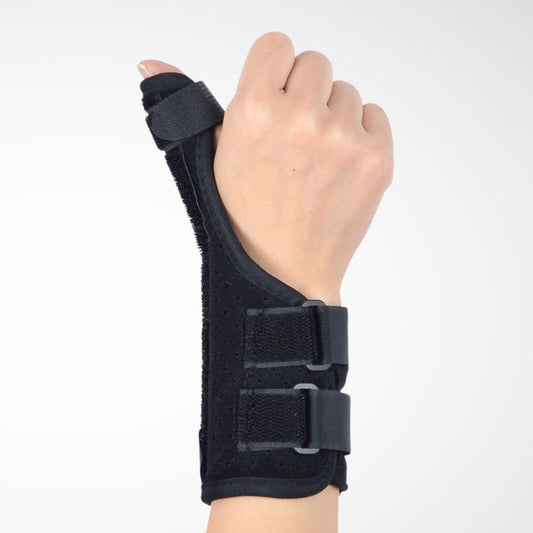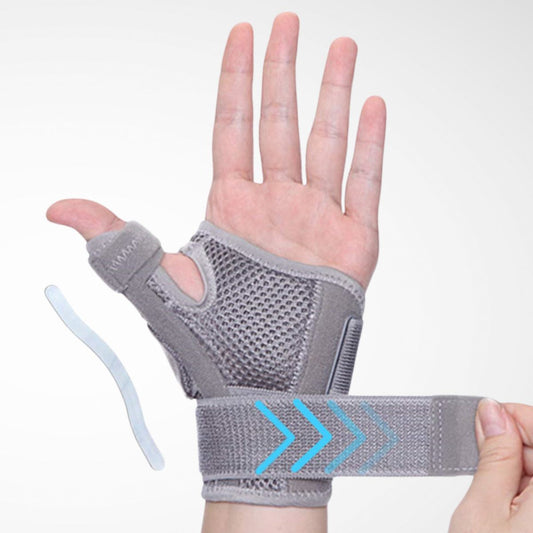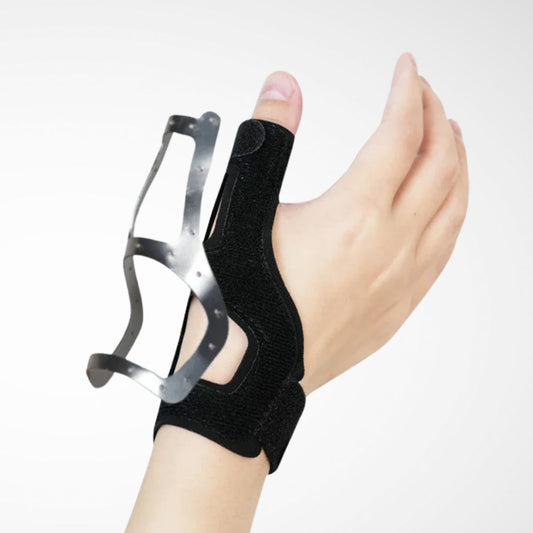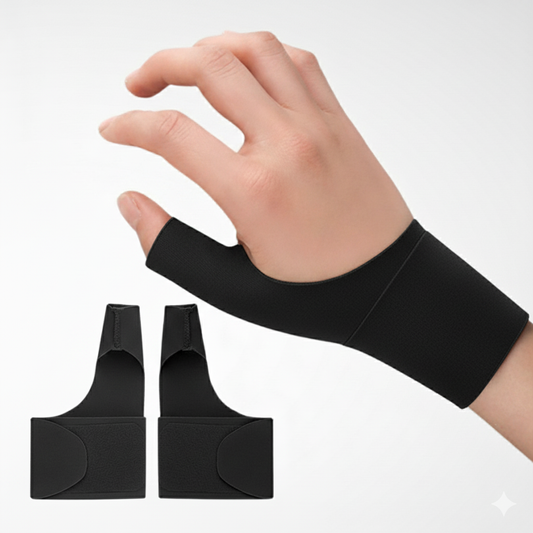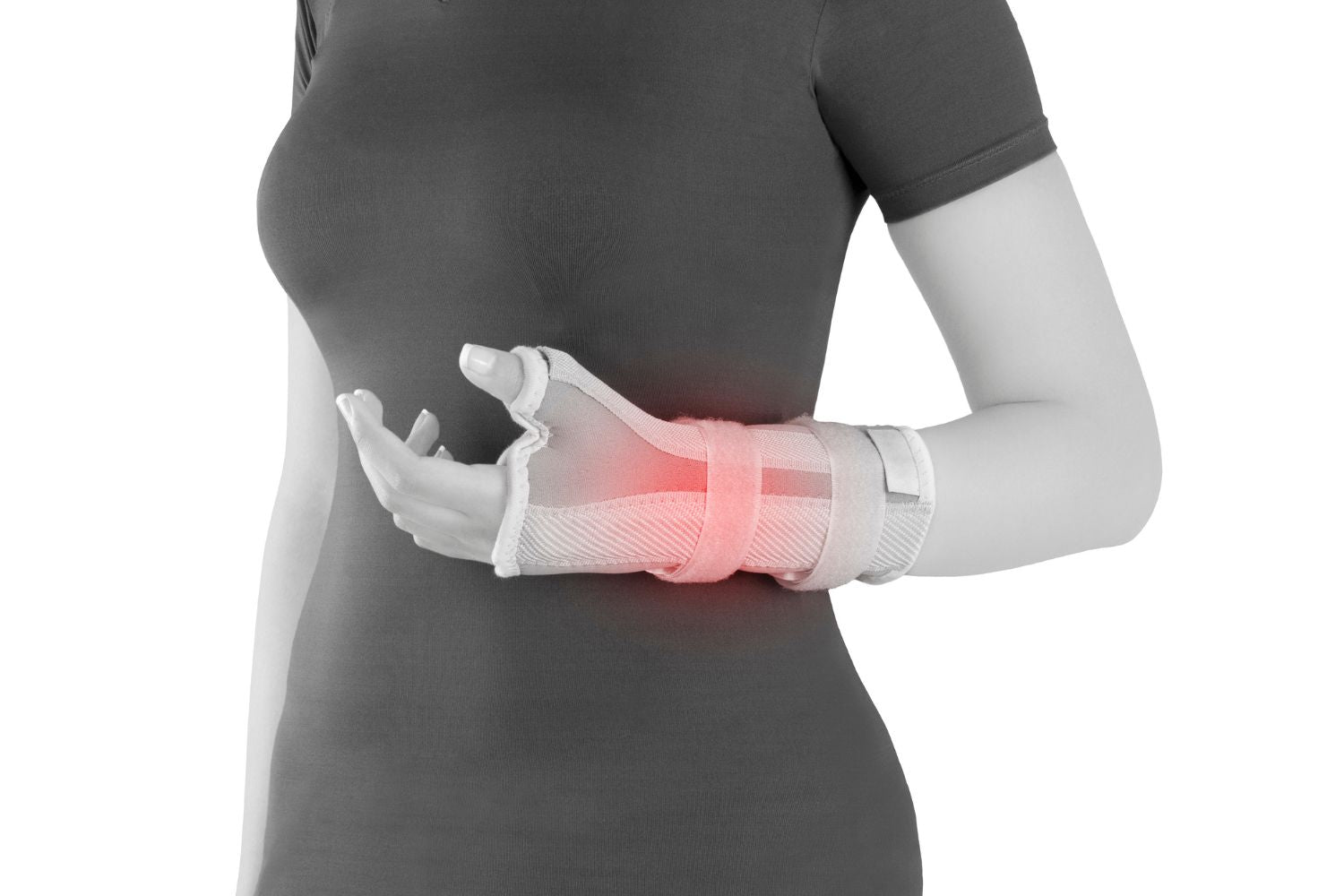-
Max Support | Thumb Spica Splint
Regular price $37.00Regular priceUnit price per$65.00Sale price $37.00Sturdy daily-use splint with reinforced control. Features a built-in metal support and dual adjustable straps for targeted immobilization and relief from thumb sprains, arthritis, or tendonitis.
Sale -
Performance Support | Thumb Spica Splint
Regular price $29.99Regular priceUnit price per$59.00Sale price $29.99Performance-grade brace with breathable build and dual metal splints. Adjustable straps stabilize the thumb and wrist — ideal for recovery or relief without disrupting active movements.
Sale -
Stabilizer Lite | Thumb Brace
Regular price $25.00Regular priceUnit price perMinimalist thumb brace for everyday support. Offers structured stability with a lightweight metal frame and open-ventilated design — great for soft-tissue injuries and tendonitis without the added bulk.
-
Elastic Compress | Thumb Support Sleeve
Regular price $12.00Regular priceUnit price perSoft, flexible sleeve for mild relief with mobility. Delivers gentle compression to ease thumb pain like arthritis, improve circulation, and support everyday movement.
-
Comfort Compress | Thumb Sleeve
Regular price $16.00Regular priceUnit price perSoft compression sleeve with gel padding. Ideal for arthritis, carpal tunnel, or daily thumb fatigue—comfortable support without restrictions.
Supporting You Starts Here:
Your Thumb Care Questions, Answered.
What kind of thumb condition do I have?
Thumb pain can come from a variety of conditions — some of the most common include:
- Thumb sprain – often caused by falls or overextension
- Skier’s thumb – a torn ligament at the base of the thumb
- De Quervain’s Tenosynovitis – pain on the thumb side of the wrist
- Trigger thumb – stiffness or locking when you bend the thumb
- Thumb arthritis – gradual joint pain, often near the base
If you're unsure, it helps to consider how the pain started. Was it sudden or gradual? Is the pain sharp, aching, or stiff? For a full breakdown, read our guide on Types of Thumb Injuries.
How do I know if a thumb spica splint is right for my condition?
If your pain is persistent or affects your grip, a thumb spica splint may help. It’s especially useful for:
- Sprains or ligament injuries (like skier’s thumb) — limits movement and supports healing
- Tendonitis or De Quervain’s — reduces strain and repetitive friction
- Recovery after injury, strain, or surgery — provides stabilization during healing
- Chronic pain or arthritis — offers compression, warmth, and support for daily relief
It’s ideal when your thumb needs immobilization, but your other fingers still need to move freely. Explore our blog for help choosing the right fit.
Difference between a thumb spica splint and a thumb stabilizer?
A standard thumb brace offers general support, while a spica splint for thumb injuries provides firmer immobilization. If you're recovering from a sprain, tendonitis, or ligament strain, a spica design helps prevent further aggravation. Read more here.
What is the best thumb support for my condition?
The best thumb support depends on what you're experiencing. Here's how to choose the right one based on common conditions:
- Sprains or ligament injuries (like skier’s thumb): Choose a thumb brace that provides both stabilization and immobilization, ideally with a metal splint and adjustable straps. These features help restrict unwanted motion, reduce stress on healing ligaments, and prevent further aggravation during recovery.
- De Quervain’s tenosynovitis: Choose a brace that restricts thumb and wrist movement, but also offers compression to reduce inflammation and wrist stabilization to relieve strain at the base of the thumb. Materials that support circulation and pain relief can make a difference during flare-ups.
- Post-injury or post-surgical recovery: For recovery following fractures, surgery, or severe overuse, go for a structured splint with rigid support and customizable fit. A spica design with metal reinforcement helps keep the joint securely aligned while healing.
- Chronic pain or arthritis: For long-term use, opt for thumb sleeves that provide light compression without restricting everyday motion. These can help improve circulation, reduce swelling, and support joint comfort throughout the day.
- General overuse or instability: If you need occasional stabilization without bulk, consider a low-profile thumb brace that frames the thumb joint while allowing natural hand movement — ideal for daily tasks or moderate strain.
Can I wear a thumb splint all day or during sleep?
Yes — many thumb spica braces are designed for extended wear. Look for breathable materials and adjustable straps to ensure comfort throughout the day, especially if you need support during work or daily tasks.
As for wearing to sleep, in some cases, yes. If your doctor recommends night-time immobilization, a thumb spica splint with soft padding and secure straps can keep your thumb protected while you rest.
Can I use a thumb brace for sports-related injuries?
Yes — sports like golf, skiing, basketball, climbing, and more often lead to thumb strain, ligament sprains, or overuse injuries. A thumb spica splint is commonly recommended in these cases to stabilize the thumb and wrist while allowing basic hand function.

